|
AmpsLab-Spk wishes everyone a Happy New Year. May 2024 bring peace and prosperity in the world. Coming back to audio, now that I know how the bass of the Satori sounds like, it’s time to look at how she fares in a conventional 2-way. In this post, I mated her to a Morel CAT378. This is one tweeter that not only sounds wonderful but I can cross her low.
The plots in Fig 1 show the Satori and the CAT378 with their respective filters. The two drivers are crossing at 1.5kHz. This is necessary to avoid the cone breakup of the Satori from contaminating the treble. Do not be alarmed at this low crossover point. It is acoustic. The actual electrical crossover of the Morel CAT378 is much higher.
Fig 2 shows how well summed the two drivers are. There are no cancellations anywhere in the crossover pass band.
To check on the phase alignment, I wired the tweeter in reversed phase. It resulted in a light notch centered at about 1.3kHz. I can get the notch to be much deeper but for now, I will leave it as is. It’s only academic because no one will hear the difference.
Fig 4 is the final response of the Thrust-CAT when the tweeter is wired in-phase. This is a very flat response by all accounts. There is only a very slight dip from 2kHz~3kHz. I can expect the vocal presence to be a bit mild. This will suit listeners that can’t stand sibilance.
The Thrush-CAT Waterfall plot (Fig 5) shows some minor artifacts in the upper treble. It is in the 1kHz~3kHz region that needs a closer look.
The Toneburst plot in Fig 6 is a better depiction of the artifacts. In this plot, they are the light blue slices (unwanted energy). There is a bunch of unwanted energy centered at 3kHz. Below at 1kHz~1.8kHz are some smaller light blue slices.
The Spectrogram (Fig 7) shows the artifacts in 2-D. This time round, the Y-axis is in the time domain. We can see there is a green spot at about 2.5kHz. This is from the Satori cone breakup. If I had not crossed the drivers at 1.5kHz, it would be worse. Fortunately now the spot is about -50dB below the fundamental. Good enough to be inaudible. There are also three streaks from 1kHz~1.8kHz. These are the light blue slices recorded in the Toneburst plot. They may look small but when referenced to time, their amplitude is as high as the bunch at 3kHz. However, they are insignificant because they are -50dB below the fundamental. Moreover, they dissipate by 6ms. These are all academic. Modern instruments measure at a micro level. The human ear cannot resolve that finely.
Generally, the Total Harmonic Distortion is expected of modern day drivers. THD from H2~H9 is -44.9dB below the fundamental. The 2nd harmonic is at -55.5dB whereas the 3rd is at -54.2dB. What is interesting are the two 2nd harmonic peaks between 2kHz and 3kHz. I can only speculate they originate from the Satori. I doubt they have any bearing on the sound quality as they are buried deep down at -44.9dB.
The final plot is the Step response. From this plot, we can see the woofer is behind the tweeter by 400 microsec. This cannot be help because of the delay from a passive crossover. The only way to circumvent this is to adopt the Theil method for time/phase alignment but that presents it’s own set of problems. There’s no free lunch in audio.
Summary The Satori is not cheap. Present price at Madisound is at $170. Is this woofer worth paying for? I’ve been listening to this Satori MW16P-4 for a few days and it’s a mixed bag. She’s no Ferrari. That was obvious in the Flycatcher-IV. Compared to the Seas U18RNX, the Seas attack is faster. Where the Seas loses out is in the weight of the bass. The Satori is “meatier”. When used in a 2-way like the Thrush-CAT, the Satori sounds pleasant to the point of soothing. Maybe it has to do with her lower distortion. She sounds very “clean”. When I pumped up the volume, that’s where she really shines. The music comes alive. I would recommend the Satori for older folks that enjoy a slower pace in life. She reminds me of the old Scanspeak. They share similar sonic signature. She’s like full-bodied vintage wine. Unless otherwise stated, all measurements were made in Full Space (4 pi) with the mic at 36 ins, tweeter axis. Impulse Window=5ms. No smoothing applied. |

January 1, 2024Projects
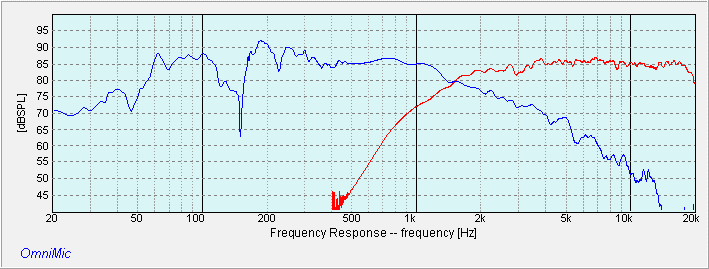 Fig 1 – (BLUE) Satori MW16P Low Pass • (RED) CAT378 High Pass (Surface Mounted)
Fig 1 – (BLUE) Satori MW16P Low Pass • (RED) CAT378 High Pass (Surface Mounted) Fig 2 – Crossover Pass Band
Fig 2 – Crossover Pass Band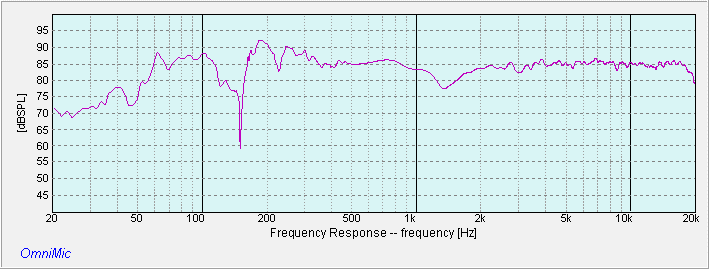 Fig 3 – Null Response
Fig 3 – Null Response Fig 4 – Thrush-CAT Frequency Response
Fig 4 – Thrush-CAT Frequency Response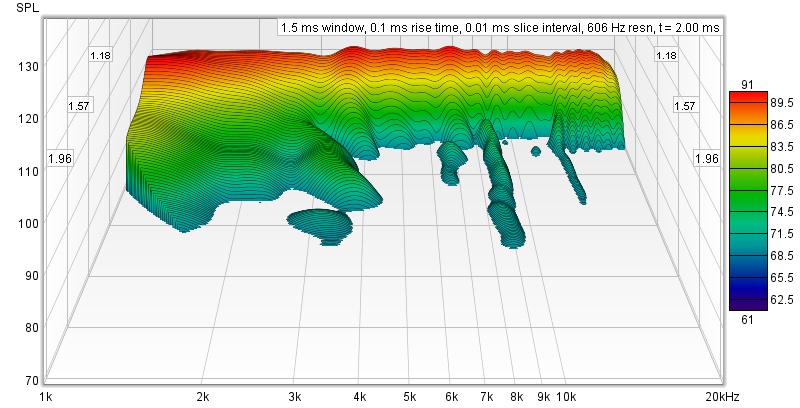 Fig 5 – Thrush-CAT Waterfall
Fig 5 – Thrush-CAT Waterfall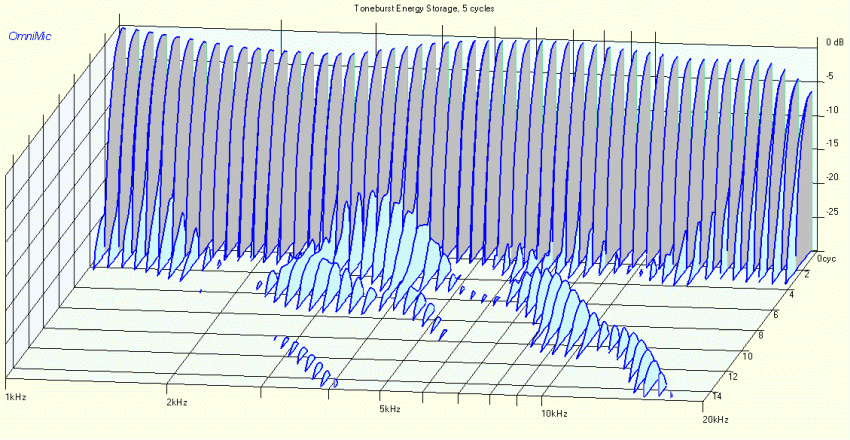 Fig 6 – Thrush-CAT Toneburst Energy Storage
Fig 6 – Thrush-CAT Toneburst Energy Storage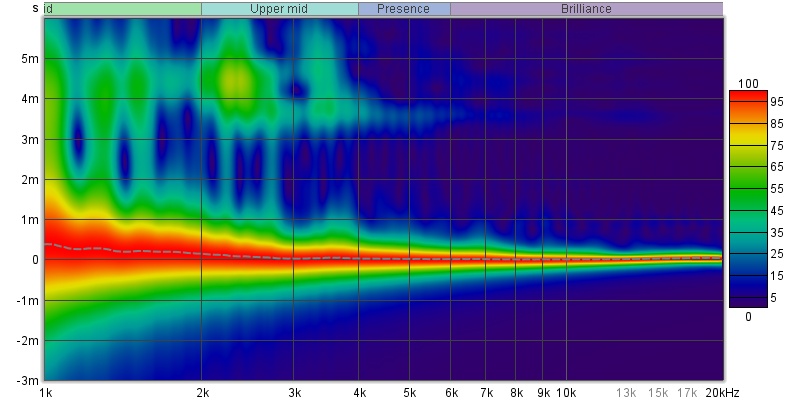 Fig 7 – Thrush-CAT Spectrogram
Fig 7 – Thrush-CAT Spectrogram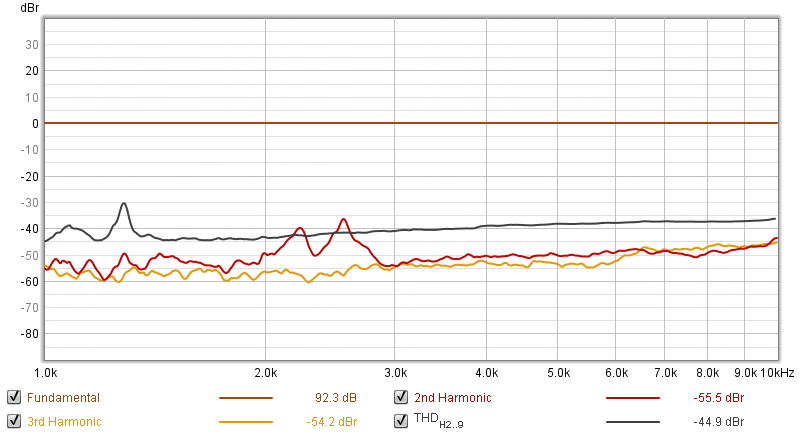 Fig 8 – Thrush-CAT Harmonic Distortion
Fig 8 – Thrush-CAT Harmonic Distortion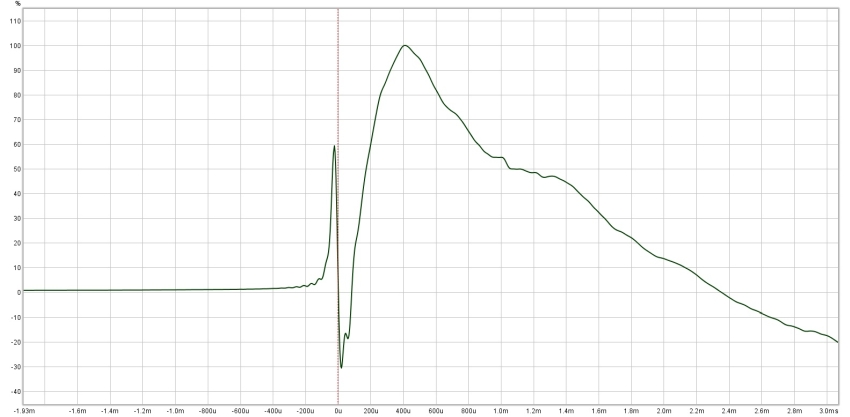 Fig 9 – Thrush-CAT Step response
Fig 9 – Thrush-CAT Step response